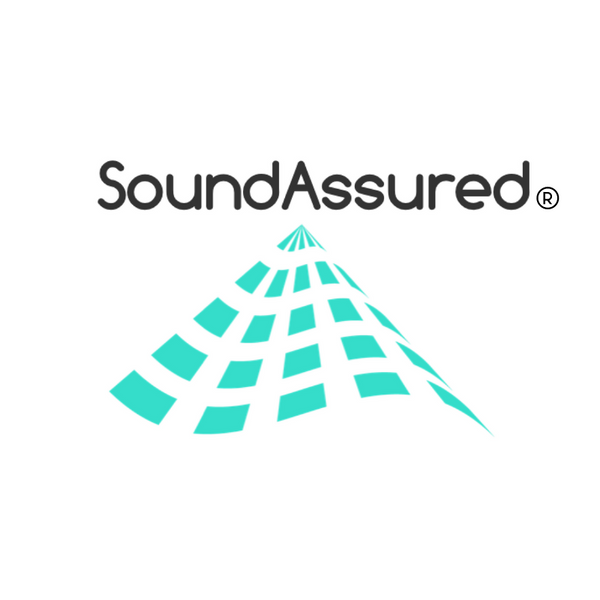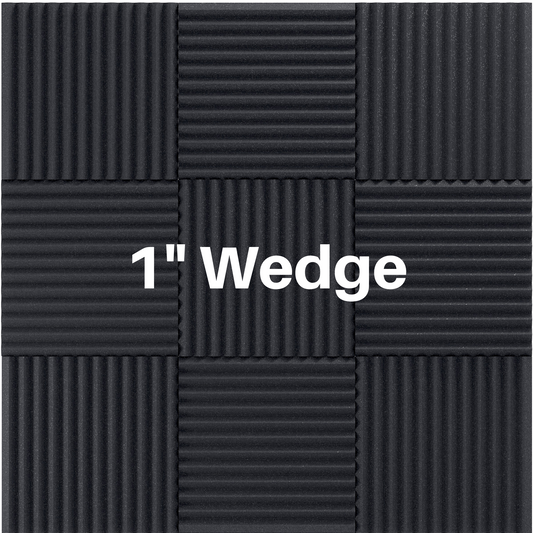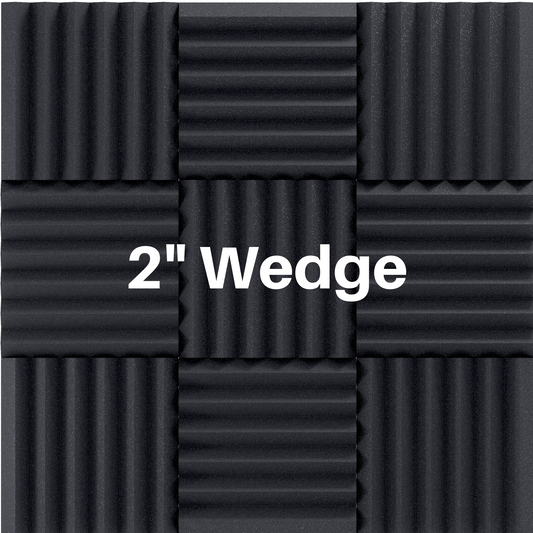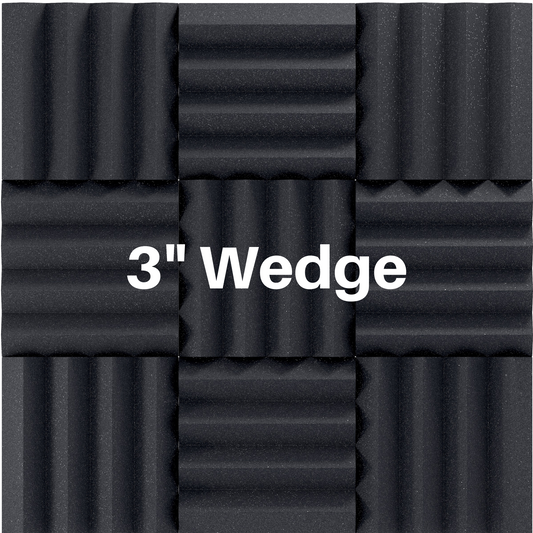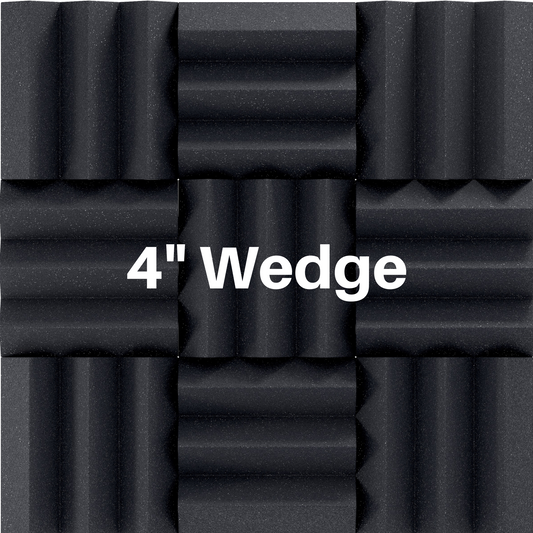Acoustic Foam vs. Rockwool vs. Fiberglass - The Acoustic Absorption Showdown
Share
When it comes to soundproofing, there are a lot of different materials to choose from. Each material has its own unique properties, and it can be difficult to decide which one is right for your needs. In this blog post, we will compare and contrast acoustic foam, rockwool, and fiberglass absorption. We will discuss the pros and cons of each material, and help you decide which one is right for you!
What does foam, rockwool, or fiberglass absorption do in a room?
Acoustic absorption will do all of the below within the room.
- decreases echoes
- lowers reverberation time
- increases sound clarity
- gives your room a flatter frequency response
- prevents standing waves
Acoustic panels can be used to improve the sound quality of a room, by absorbing excess sound waves. Absorption panels are often used in recording studios, podcast booths, and other rooms because they do an excellent job of dampening unwanted sound.
How are sound waves absorbed?
All of these materials absorb sound in the same way. The sound energy is transferred to heat energy through friction when sound waves bounce into the material.
This means that acoustic panels will absorb sound waves rather than the sound bouncing off flat surfaces like painted drywall. If you have ever been into a bare room with flat walls then you know how painful the echoes can be. Adding absorption is imperative when sound clarity is a priority!
Which acoustic absorption material is the best?
We know that each material will absorb sound in the same way, so what is the difference?
Acoustic foam
Pros:
- Inexpensive
- Good for small and large areas
- Available in a variety of colors and sizes
- Easy to install
- Lightweight
Cons:
- Not as durable as other materials
- Need thicker material to properly absorb low frequencies. This is why we have awesome corner bass traps! Panels and bass traps combine to give you full frequency absorption!
- Can be flammable if you do not buy high quality fire retardant foam like SoundAssured!
- Cheap foam that is compressed overseas is a problem! The foam will not expand properly so the companies will tell you to use water. This can cause mold to form in your panels! Our panels expand within a day because they are compressed right before shipment in the USA!
Rockwool
Pros:
- Non-flammable
- Good for large areas and inside walls
- Excellent at absorbing low-frequency sound waves
- Easy to find at your local hardware store
Cons:
- More expensive than acoustic foam
- Can be difficult to install
- Requires proper wrapping with high quality acoustical fabric. If the panels are not wrapped properly then small particles can get out and be breathed in.
Fiberglass
Pros:
- Non-flammable
- Comes in boards that are lightweight and rigid which makes for easier install that rockwool. We suggest the rotofast mounting hardware. All of our standard fabric panels come with rotofast anchors!
- Excellent sound absorption for the thickness compared to acoustic foam. You do not need as thick of panels on your wall.
Cons:
- More expensive than acoustic foam
- Harder to find than rockwool
- Requires proper wrapping with high quality acoustical fabric. If the panels are not wrapped properly then small particles can get out and be breathed in.
So, which one should you choose?
It really comes down to your preference and your budget. We know that all of these absorbers perform the same trick! The main differences are the aesthetics and your budget!
If you are working on a home studio, a voice over booth, a podcasting studio or something small then acoustic foam is the most affordable and easiest to install!
If you are planning a recording studio or broadcast center that will be in business for the next 25 years you may take a different approach. In this case you will likely have a larger budget that allows you to invest into walls with built in rockwool treatments.
Take advantage of our FREE room analysis. One of our acoustic pros will help you out! We are not sales people. We will give you the best advice so you get the results and the look you want! If another company has a product that is better for you, we will tell you. Our main goal is to help you, not to sell more products!
Pay attention to absorption ratings!
Either way you go, the most important thing to look at when deciding which acoustic absorber to buy is the absorption ratings!
Here are the absorption ratings for our acoustic foam. Our foam was tested at Riverbank Acoustical Laboratories, the number one testing lab in the US!

Read more about absorption ratings HERE!
Compare absorption ratings of various materials HERE!
Below are the rockwool absorption ratings. Note the thickness that is required for optimum absorption.

Here are the absorption ratings for rigid fibergalss board.

Absorption does not equal soundproofing!
Lastly, let's talk about a common misconception about acoustic absorbers. Many people think you can slap some acoustic panels onto a wall to stop sound from leaving or coming into the room. This is false.
Acoustic absorption will NOT stop sound from coming into your room or leaving your room! If you want to learn more about sound transmission through walls and ceiling check out THIS POST.
For sound absorption you are looking for the NRC (Noise Reduction Coefficient) rating. For soundproofing (ie sound transmission) you are looking for the STC (Sound Transmission Class) rating.
Do you have any tips for treating a room? Share them in the comments below!
